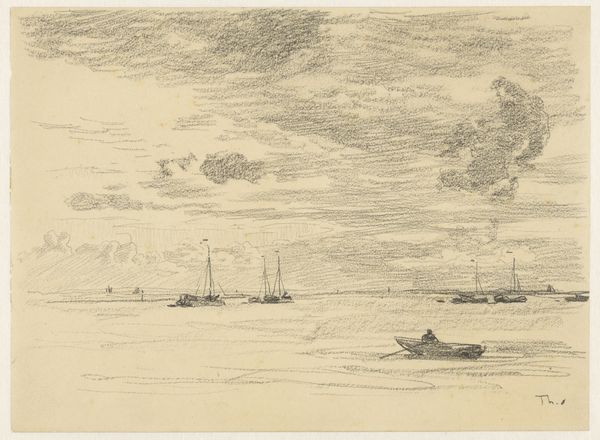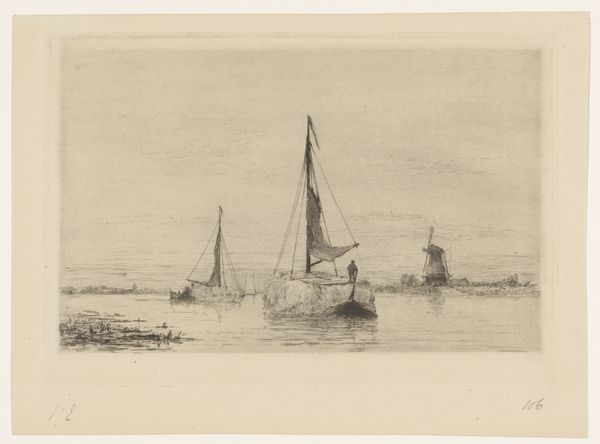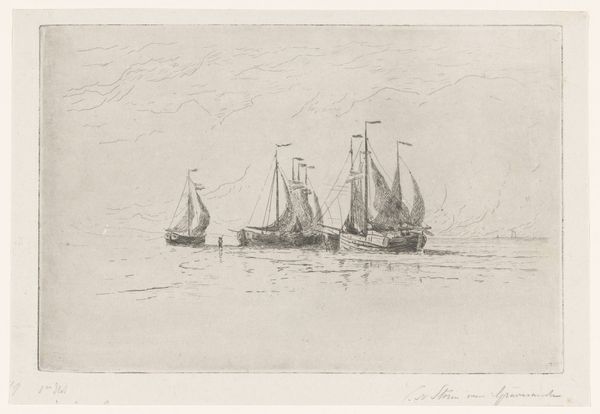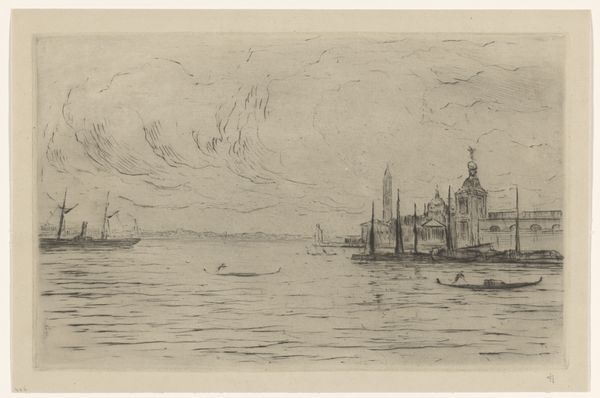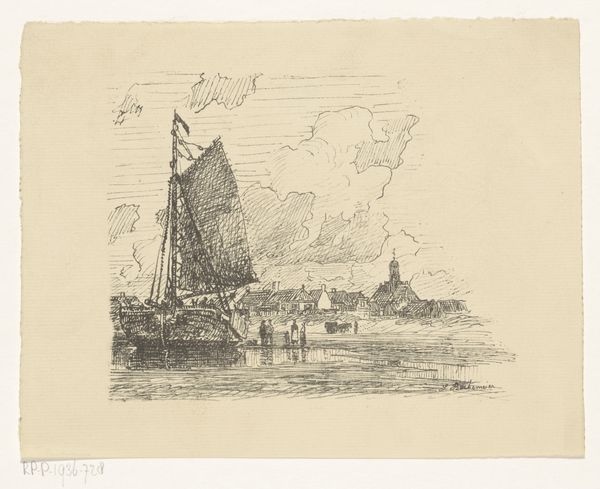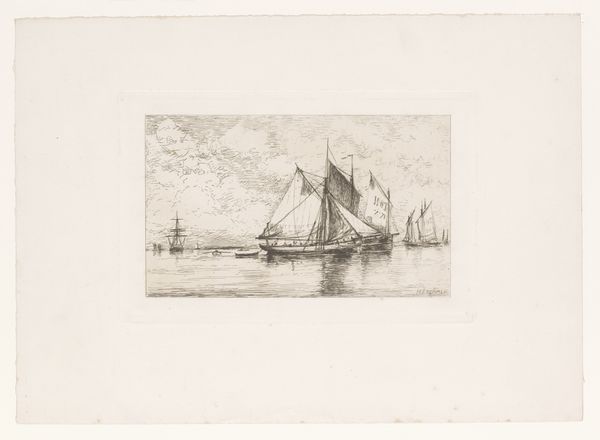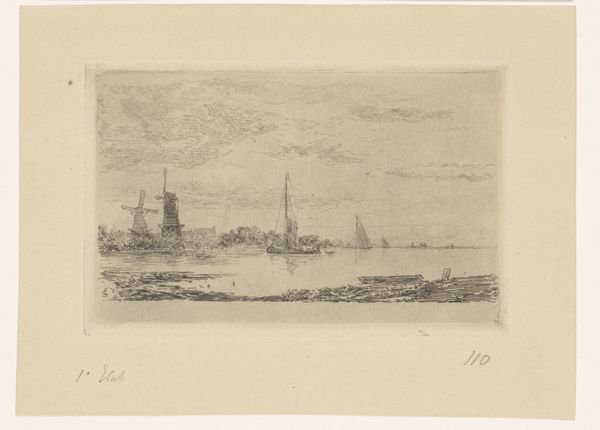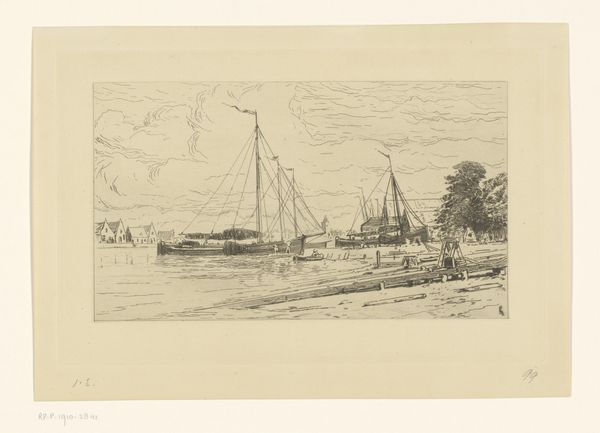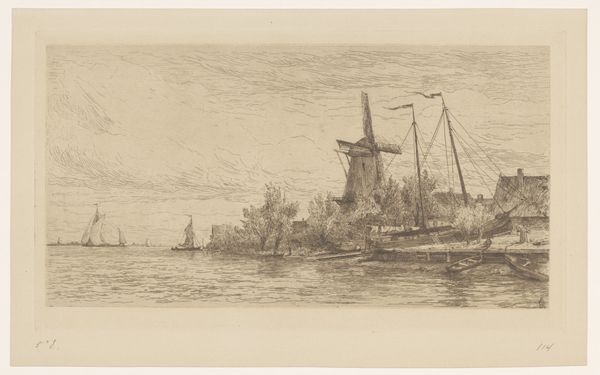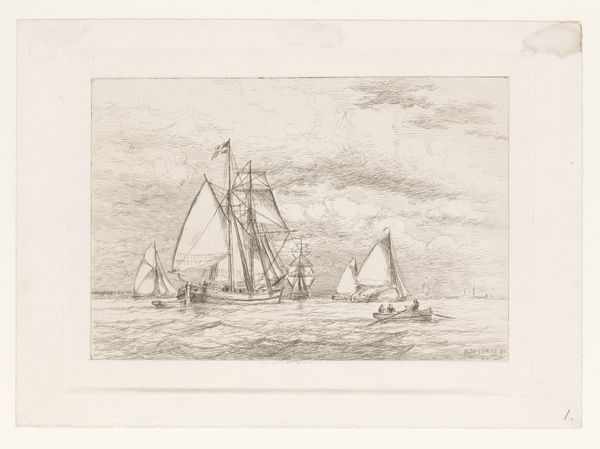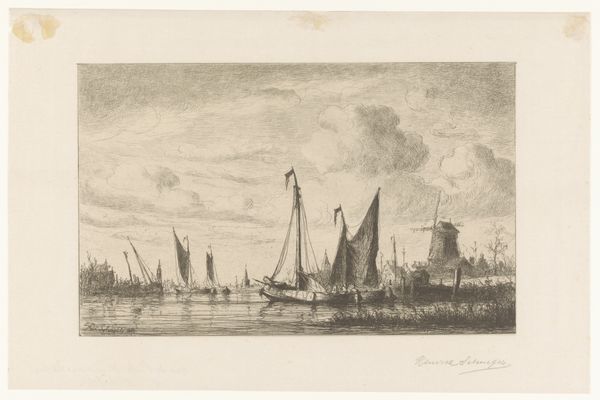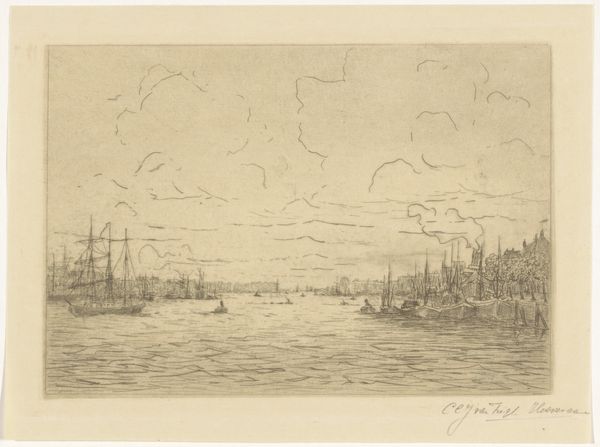
drawing, print, etching, paper, pencil, graphite
#
drawing
# print
#
etching
#
landscape
#
etching
#
paper
#
personal sketchbook
#
pencil
#
graphite
#
realism
Dimensions: 96 × 146 mm
Copyright: Public Domain
Curator: Welcome. Here we have "Dunbarton Looking from the Clyde," a work by Copley Fielding, dating from around the same time as the birth of the Industrial Revolution. It combines etching with pencil and graphite on paper, depicting a seascape dotted with vessels. Editor: My initial response is one of tranquility. The grayscale palette creates a somber, almost melancholic mood, softened only by the detail and the hazy atmosphere. What I find particularly captivating is the way light and shadow play across the water's surface. Curator: And if we consider the broader implications of a scene of Scottish seafaring during this time, we can read this picture as a study in transition, as Scotland shifted toward its role in global industrial capitalism. This change surely impacted Fielding’s own labor as an artist. The mass-producible medium of etching suggests both efficiency and access. Editor: Absolutely. The formal elements here reveal how Fielding achieves this feeling of expansiveness with subtle tonal variations. Look at the masterful control in layering of light to build atmospheric depth. Notice, for instance, how he captures the light reflected from the crests to mimic waves on a much larger scale! Curator: Precisely. I am also drawn to the relationship between human activity and nature—the labor involved in shipbuilding, sailing, and even in the production of art. A contrast emerges between these early vessels and our own methods of consuming resources. We need labor, materiality, and consumption to reveal their deeper layers of meaning. Editor: Yes, that dialogue between humankind and nature becomes very prominent because it echoes in the image's composition itself. The geometric shapes of boats create an interesting contrast with the more natural, fluid shapes of the water, sky, and coast. I also enjoy how Fielding uses subtle lines to create movement through all vessels on water. Curator: Considering our present historical vantage point, “Dunbarton Looking from the Clyde” asks crucial questions about industrial transformation and about the legacy of such works made with reproducibility. Editor: Indeed. I walked away with a stronger sense of not just aesthetic appreciation but deeper pondering, and what is art if it doesn’t provoke deep thought and reflection?
Comments
No comments
Be the first to comment and join the conversation on the ultimate creative platform.
